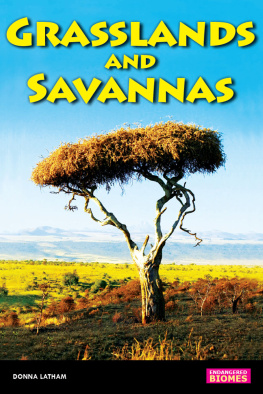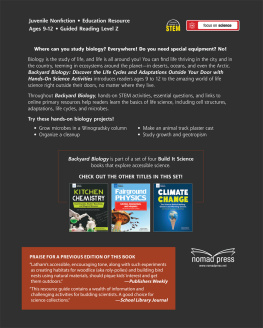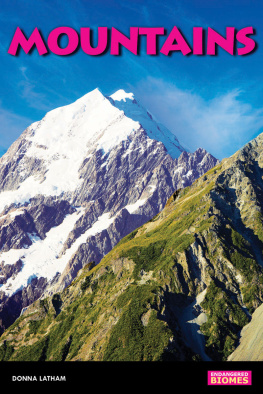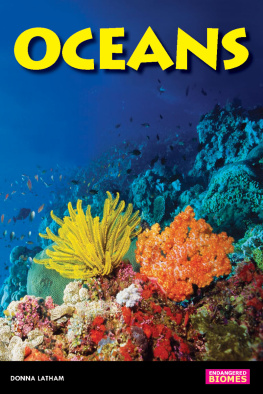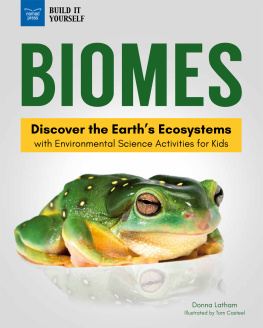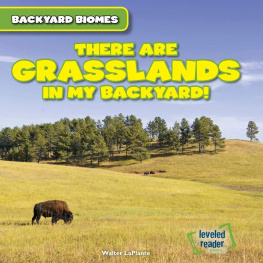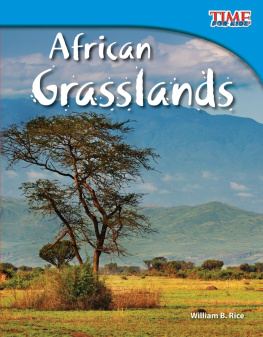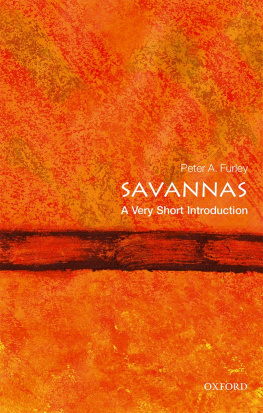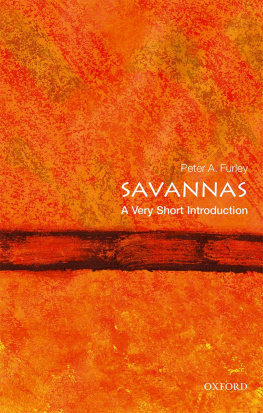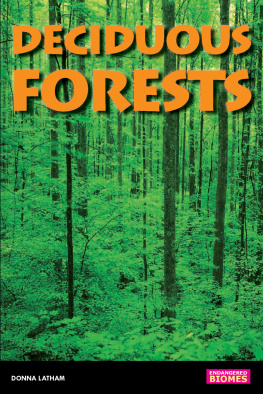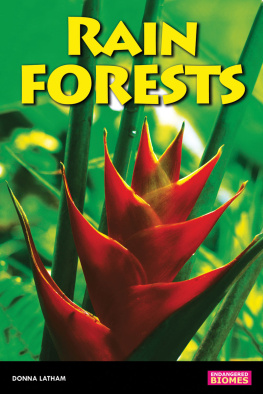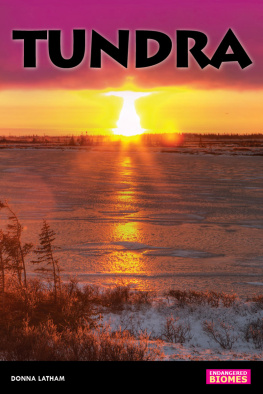All rights reserved.
No part of this book may be reproduced in any form without permission in writing from the publisher, except by a reviewer who may quote brief passages in a review. The trademark Nomad Press and the Nomad Press logo are trademarks of Nomad Communications, Inc.
814 N. Franklin St.
2456 Christian St.
Grab your backpack! Youre about to embark on an exciting expedition to explore one of Earths major biomes: the grasslands!
Did You Know?
Scientists dont agree on how many biomes there are. Some divide the earth into five biomes. Others argue for 12.
Words to Know
biome: a large natural area with a distinctive climate, geology, and set of water resources. A biomes plants and animals are adapted for life there.
climate: average weather patterns in an area over many years.
geology: the rocks, minerals, and physical structure of an area.
biodiversity: the range of living things in an ecosystem.
adapt: changes a plant or animal makes to survive in new or different conditions.
ecosystem: a community of living and nonliving things and their environment. Living things are plants, animals, and insects. Nonliving things are soil, rocks, and water.
environment: everything in nature, living and nonliving.
Each biome has its own biodiversity, which is the range of living things adapted for life there. It also contains many ecosystems. In an ecosystem, living and nonliving things interact with their environment.
Teamwork keeps the system balanced and working. Earths biomes are connected together, creating a vast web of life.
Landscape and Climate of the Grasslands and Savannas
Trek through the earths grasslands and youll find yourself walking across every continent except Antarctica. Grasslands are huge areas of open land with few trees or large shrubs. Grasses cover the vast hills and plains.
About one quarter of the earths land is covered with temperate or tropical grasslands.

Temperate grasslands are usually in the middle of continents, north of the Tropic of Cancer and south of the Tropic of Capricorn. They have a growing season in the hot summers and a dormant season during the cold winters. Tropical grasslands, near the equator, have a rainy season and a dry season.

Words to Know
plains: a large, flat expanse of land.
temperate: climate or weather that changes with the seasons but is generally not too extreme.
tropical: climate or weather that is hot and humid all year.
Tropic of Cancer: a line north of the equator. It marks the farthest north that the sun can appear directly overhead at noon.
Tropic of Capricorn: a line south of the equator. It marks the farthest south that the sun can appear directly overhead at noon.
dormant: when plants are not actively growing during the winter or when it is very dry.

Temperate grasslands receive 10 to 35 inches of precipitation a year (25 to 89 centimeters). Most of it falls in the late spring and early summer. Summer temperatures can be over 100 degrees Fahrenheit (38 degrees Celsius). Winter temperatures can be as low as -40 degrees Fahrenheit (-40 degrees Celsius).
Grasslands in different places have different names. The United States and Canadas temperate grassland is known as the prairie.
Words to Know
precipitation: any falling moisture, such as rain or snow.
prairie: the temperate grassland of North America.
pampas: the temperate grassland of South America.
veldt: the temperate grassland of southern Africa.
Eurasia: the land that includes Europe and Asia.
steppe: the temperate grassland of Eurasia.
The prairie is generally covered with tall grasses and fills in the land east of the Rocky Mountains.
South Americas largest grassland is called the pampas. It covers parts of Argentina, southern Brazil, and most of Uruguay. The temperate grasslands of southern Africa are called the veldt.
Eurasias temperate grassland is called the steppe. It is the largest grassland in the world, crossing Mongolia, Siberia, Tibet, and China. The steppe is generally covered in short grasses.
Word Exploration
The word veldt means field in Afrikaans. Steppe means grassy plain in Russian.
The savanna is the tropical grassland that covers almost half of Africa. Parts of tropical Australia, South America, and India are also covered with savannas.
Words to Know
savanna: tropical grassland.

These are the grasslands near the equator, between the Tropic of Cancer and the Tropic of Capricorn, where its hot all year.
Temperatures rarely fall below 64 degrees Fahrenheit (18 degrees Celsius), and it can be as warm as TOO degrees Fahrenheit (38 degrees Celsius).
Tropical grasslands receive more rain than the temperate grasslands. Thats why there are more trees. The average rainfall is 25 to 60 inches per year (64 to 152 centimeters). Winter is a long, dry season. Summer is wet, with afternoon rains that pour down for hours.


